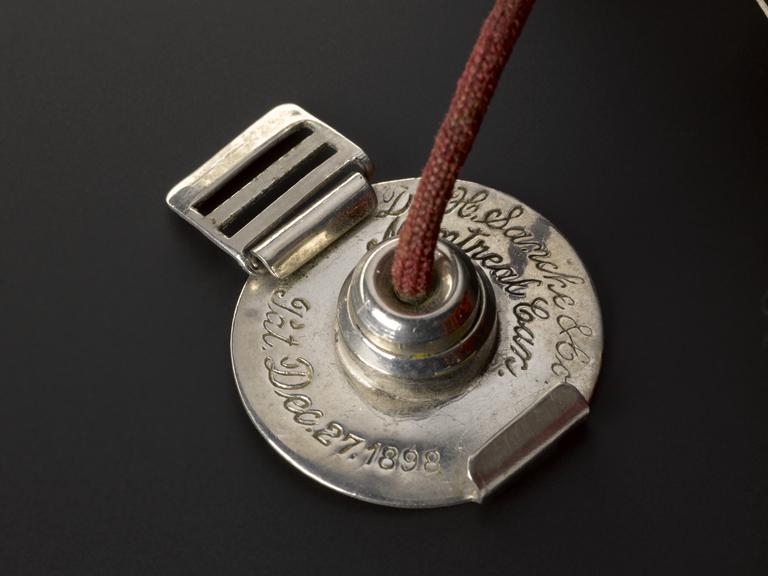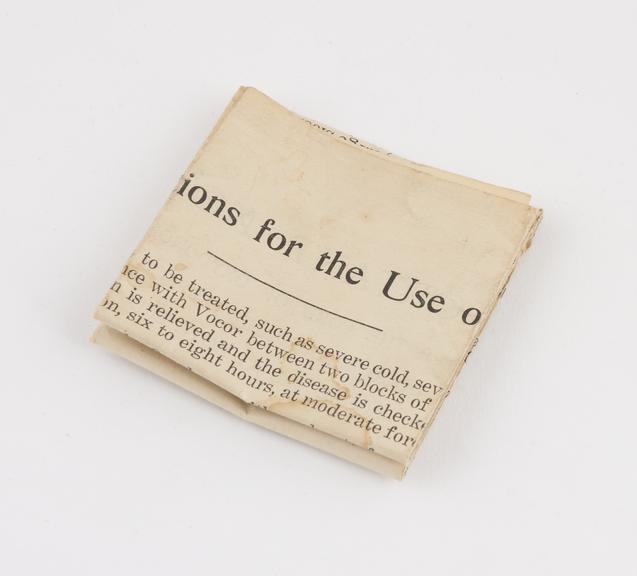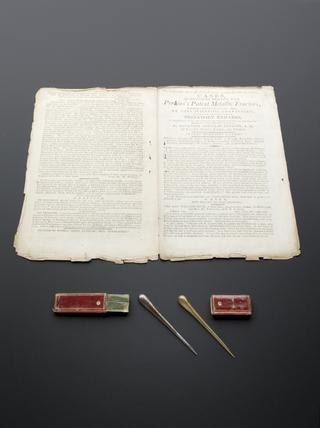The 'Oxydonor', Canada, 1898-1930
Oxydonor No. 2 consisting of decorated nickel plated cylinder with two electrodes inscribed with Oxydonor No. 2 , with red cloth covered wires, manufactured by Dr Hercules Sanche, Montreal, Canada.
More
Dr Hercule Sanche invented this device in the 1890s, claiming this self-treatment could cure all diseases except terminal cases. Sanche went so far as to say that with the introduction of his invention there would be no further need for doctors. It is actually a classic example of medical quackery.
The metal cylinder would be placed into a bowl of water and the metal contact pads at the end of the red wires applied to the ankle or wrist of the patient, who would be laying in bed. Apparently, the colder the water the more effective was the treatment. Sanche believed his device made the body take in more oxygen and cure disease, but the treatment was effectively useless.





















